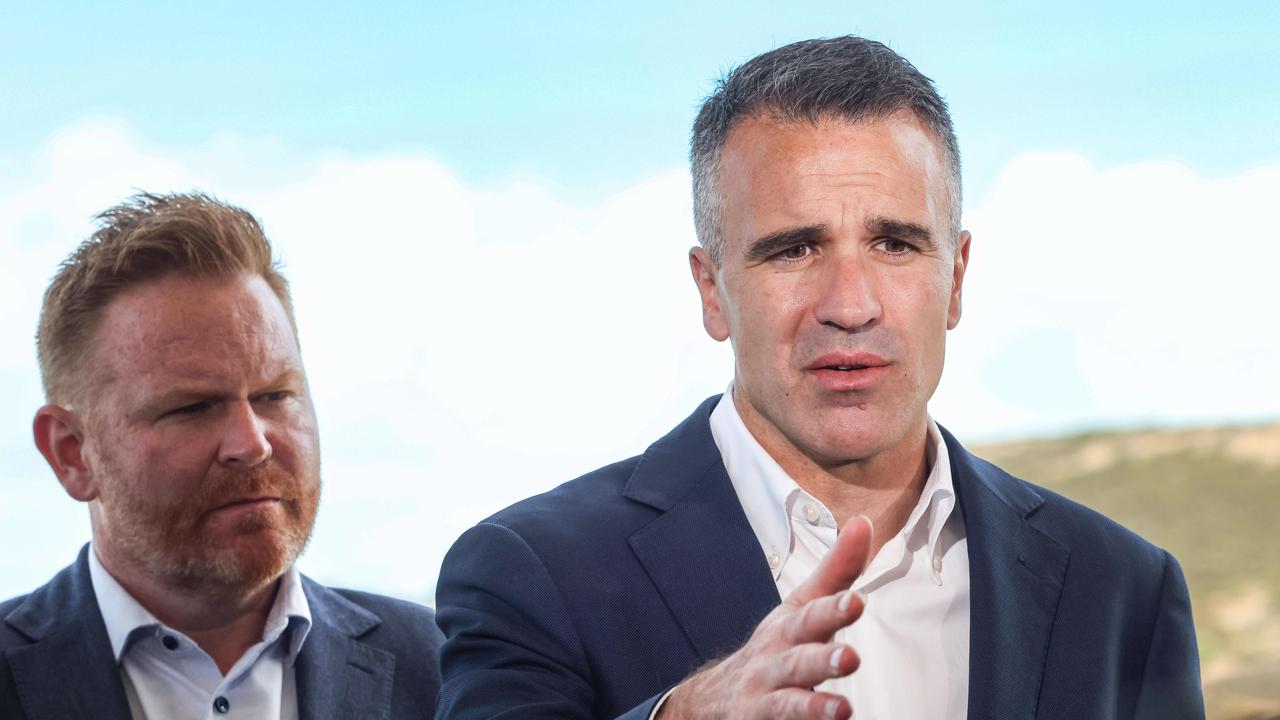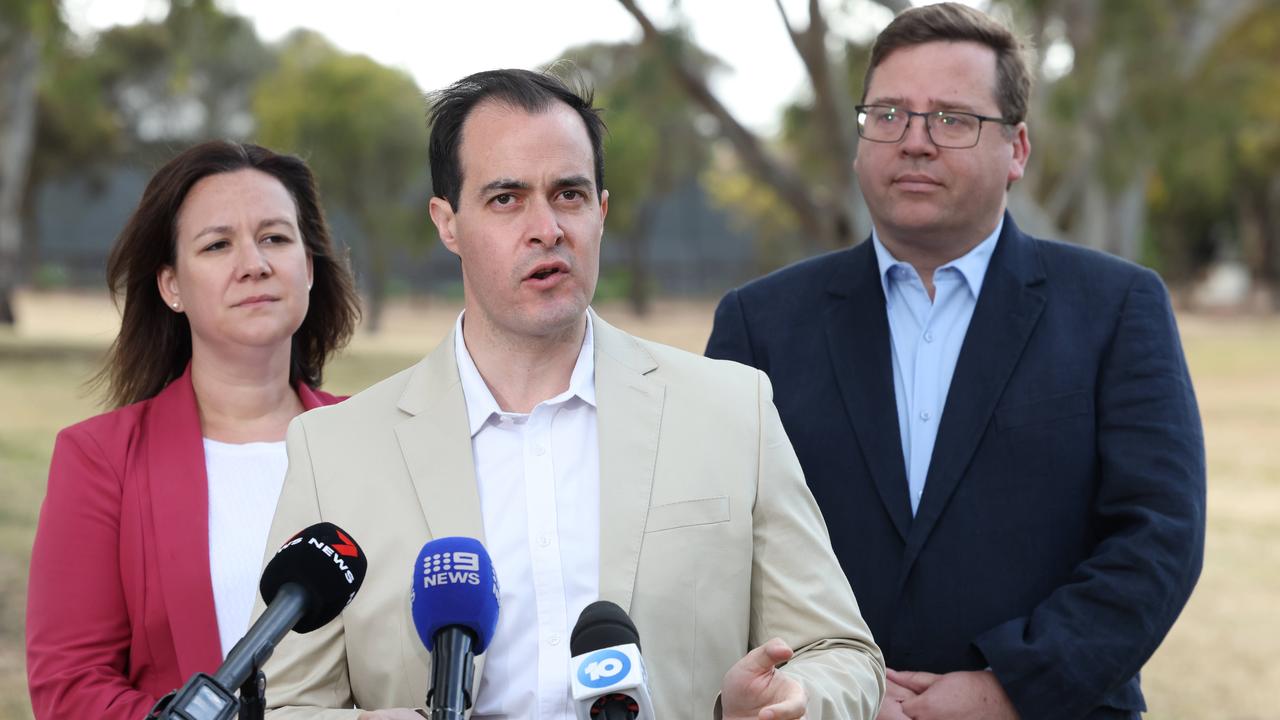Analysis: Black by-election disaster exposes deep problems the SA Liberals can’t blame on Peter Malinauskas | Paul Starick
Labor and their core supporters’ place as the ruling class in South Australia has just been set in stone, writes Paul Starick. Have your say.
SA News
Don't miss out on the headlines from SA News. Followed categories will be added to My News.
The party of the working class has been cemented as the ruling class in South Australia by the stunning result in the Black by-election.
Labor has held power for more than 40 of the past 60 years and, based on Saturday’s landslide, is poised to obliterate its Liberal rivals.
The Opposition has been left with just 13 seats in a 47-seat lower house after losing Black, a southwestern Adelaide mortgage belt seat previously held by former Liberal leader David Speirs.
His replacement Vincent Tarzia, after winning a leadership ballot little more than three months ago, confidently declared: “The Liberal Party will win the state election in 2026.”
That forecast now looks crazy-brave, rather than the assertive prediction of an ambitious man determined to lead his team out of the electoral wilderness.
It is too simplistic to attribute Labor’s dominance solely to Premier Peter Malinauskas’s ongoing popularity and political acumen – or the campaigning skill of the SA Labor Party’s backroom operators.

Yes, Mr Malinauskas is a once-in-a-generation politician. But he is no superman and, apart from a handful of key ministers, the talent within his ranks is average.
The key to the charismatic Premier’s success, thus far, has been harnessing state pride through talking up a well-performing state economy, while attracting events like AFL Gather Round and LIV Golf.
He has a rare ability to explain complex policy measures to mainstream South Australians, while having them plausibly believe he’s the sort of bloke they’d enjoy having a drink with.
Crucially, voters appear to have given Mr Malinauskas a leave pass for failing to keep his core 2022 election promise – to fix the ambulance ramping crisis.
TELL US MORE IN THE COMMENTS
Most likely, this is because Labor surfed a wave of discontent and fear in early 2022, when people feared an ambulance would not turn up if they were crippled by Covid-19 – then sweeping through the state for the first time.
Regardless, the electoral climate should have suited the Liberals in Black. Three days before the by-election, The Advertiser revealed Labor feared voters would seek to send a stark message to Prime Minister Anthony Albanese in retribution for cost-of-living pain. During a cost-of-living crisis, SA is saddled with the nation’s most expensive electricity prices.
Crippling power bills and the failure to fix the ramping crisis should have been fertile ground for the Liberal Opposition in a mortgage-belt area.

But the latest Liberal catastrophe exposes the deep-rooted structural deficiencies within the party.
The Liberals have won successive state elections only once since Sir Thomas Playford’s more than 26-year reign ended in 1965.
Even then, having swept to landslide victory in 1993 after the State Bank financial disaster, they squandered that margin in 1997 before ultimately losing power in 2002.
The State Bank disaster of 1991 triggered long-term trends that have devastated the Liberal constituency.
Young university-educated adults fled interstate in search of white-collar work. Adelaide’s big business community was savaged – Santos is now the only SA firm in the ASX top 100.
The professional, private enterprise class that underpins Liberal support on the eastern seaboard is much thinner in SA.
Instead, the public sector is a disproportionately large employer. These unionised workers tend to back Labor.
These long-term trends have been confirmed by the Black by-election. This should come as no surprise.
Mr Speirs did well to hold the seat against the tide at the 2022 election. But, even before his first court appearance on Friday on a drug supply case, Liberals were writing off their chances.
Senior Liberals told The Advertiser on Thursday afternoon that party members canvassing at pre-poll stations in Black were deeply concerned and expected to lose.
One Liberal figure, forecasting a loss in Black, said this would trigger another upheaval in state ranks, because MPs and members were deeply concerned about a repeat of the 2021 Western Australian election wipe-out, at which the Liberals were left with just two seats.
“I told you they’d lose but never thought it would be that bad,” a Liberal messaged on Sunday morning.

If the Liberals are to avoid a 2026 wipe-out and rebuild to an election-winning position, they should start following the adage of their most successful federal leader in recent times, former prime minister John Howard. A perpetual campaigner, his adage was: “You can’t fatten the pig on market day.”
Mr Malinauskas also is a perpetual campaigner. Voters know what he stands for. The same cannot be said for the Liberals, particularly on economic policy.
They have no idea how the SA Liberals will make a practical difference to their lives, by reducing the immense pressure being heaped on household budgets.
The next state election is 16 months away, in March, 2026. But major parties typically release substantive policy a year out. In 2021, Mr Malinauskas unveiled a $593m hydrogen power plant plan – a project now providing plenty of ammunition for the Opposition.
The Liberals cannot expect to return to power simply by criticising Labor and Mr Malinauskas.
Labor is too entrenched as the ruling class in SA, while the Liberals have to rebuild from a shattered foundation.
More Coverage
Originally published as Analysis: Black by-election disaster exposes deep problems the SA Liberals can’t blame on Peter Malinauskas | Paul Starick









